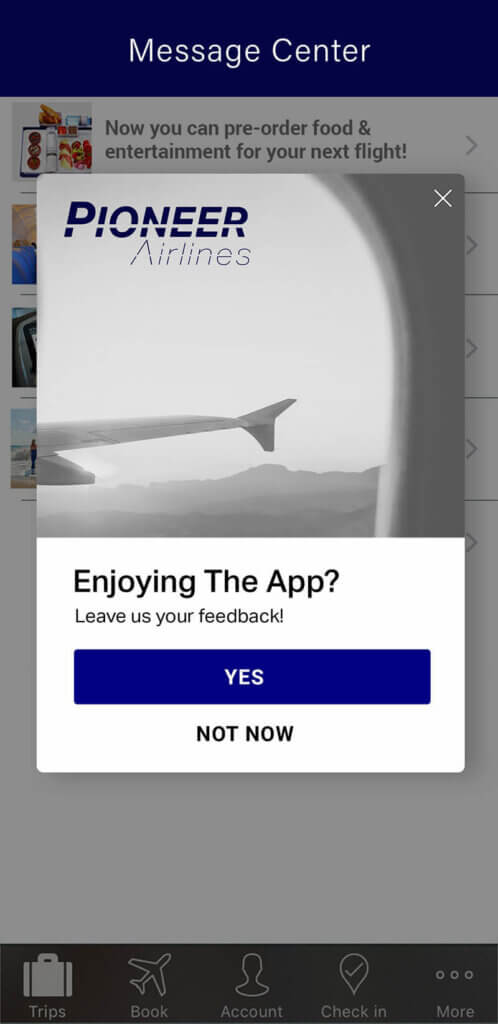How In-App Messages Improve CX and Reduce Friction

Thomas Godfrey Enterprise Sales Representative, Industry Director

Share to my network
In this article
Categories
Book a meeting
Connect with our team of experts to discuss your conversion and loyalty goals, and how we can help you achieve them faster.
Get a demoMobile apps play a growing role in consumers’ lives with people spending around 4.2 hours each day using them according to Nielsen. That’s a 30% increase over two years prior, driven in large part by the COVID-19 pandemic. But even pre-pandemic, brands were leveraging apps, push and in app-messaging to build and grow customer relationships. Now, due to Apple’s recent privacy-centered changes to how iOS devices handle notifications, in-app messaging is set to play an even more valuable role in your mobile engagement strategy.
Let’s look at how in-app messages can help improve CX and reduce friction, as well as keep your users engaged in this new era of consumer privacy.
Benefits of In-App Messages
In-app messaging is a key component of a great omnichannel engagement strategy, complementing other channels like push, email and SMS. However, mobile apps and in-app messaging play a unique role in that mix because of their ability to serve as a focused point of reference and dedicated communication channel between brand and consumer.
In-app messages are also highly effective. Past Airship research found that message center messages outperform push messages by a significant margin. Plus, your app users tend to be some of your most loyal customers. These highly engaged customers are likely to interact and engage with your brand across other channels, becoming super users and maybe even lifelong brand advocates.
Furthermore, in-app messages can make the app more useful to customers, giving them more reasons to hang onto it. That’s important because 77% of daily active users drop off within the first three days after installing an app and 25% of installed apps are never used in the first place.
When to use In-App Messages
When it comes to effectively orchestrating your messages, it’s critical to consider the channels that customers prefer or are active on, and which channels (or mix) provide the best CX.
In-app messaging serves particularly well as a contextual channel, allowing you to reach customers on their mobile devices with easy to find, timely and relevant information, as well as transactional messages. Some of the top in-app use cases include:
- Welcoming and onboard new app users
- Educating customers about new features
- Using surveys or other forms to gather data on user needs and preferences
- Driving positive app ratings and NPS scores
- Getting people opted in for push notifications (especially those that opted out initially)

New iOS Privacy Features Elevate the Value of In-App Messaging
In light of Apple’s recent privacy-centered changes to how their devices handle notifications—new “focus” settings and requirements that marketers get permission for marketing messages—it’s more important than ever to send timely and relevant messages on the right channels. You’ll also need to leverage first-party and zero-party data as intelligently as possible and take advantage of opportunities for transactional messaging that streamlines CX.
The good news about in-app messaging is that once a customer is registered and using the app, they don’t need to opt-in, creating a prime opportunity for personalized and effective communication. Plus, by engaging customers through the app you can fine tune your engagement with in-app behavioral data, preference centers or by sending in-app surveys.
When used as part of an omnichannel engagement strategy, in-app messaging is a powerful tool for staying connected with customers, providing them with valuable information and making their lives easier. Plus, it provides a tried and true means of communicating with today’s mobile consumers, who have more choice than ever when it comes to marketing messages and privacy.
Are you interested in adding in-app messaging to your channel mix? Or are you not sure which channel is best for your messages? We can help!
